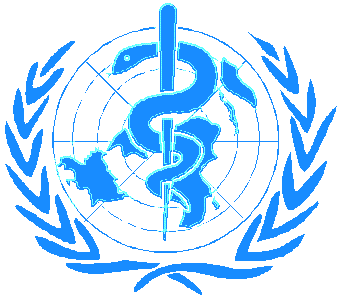 
|
AIR AND
HEALTH
Health effects of air pollution
|
One way of classifying the health effects
of pollutants is to make a distinction between two broad
categories: acute (i.e. short-term) and chronic
(i.e. long-term) effects. For each of these categories, the
effects can range in severity from death to minor illness or
discomfort. For example, dust and other polluting particles in
air can have acute effects, such as immediate irritations to eyes
and throat, or hospitalisation and even deaths from respiratory
failure or heart attacks, caused by severe episodes of air
pollution. For some pollutants there may be a threshold level of
exposure, below which no health effect is evident, e.g. SO2. For
others, there may be no threshold, and some effect may occur
whatever the level of exposure is, e.g. benzene.
| Estimated health
impact of ambient air pollution in Europe |
| Indicator of health deficiency |
Proportion of the health deficiency
attributed to the pollution |
Estimated number of cases (annual) |
| Cough
and eye irritation in children |
0.4-0.6%
|
2.6-4 million |
| Lower
respiratory illness in children |
7-10% |
4-6 million |
| Lower
respiratory illness in children causing a medical visit |
0.3%-0.5% |
17-29 thousand |
| Ambulatory
visits due to respiratory disease |
0.2-0.4% |
90-200 thousand |
| Decrease
of pulmonary function by more than 5% |
19% |
14 million |
| Incidence
of chronic obstructive pulmonary disease |
3-7% |
18-42 thousand |
| Hospital
admissions due to respiratory disease |
0.2%-0.4% |
4-8 thousand |
| WHO European Center for Environment and
Health, Concern for Europe's tomorrow, 1995 |
| Epidemiology(Click
for more details) |
| Epidemiology
is the study of the distribution and the determinants of
health-related states and events in populations, and the
application of this study to the control of health
problems. Epidemiological methods have been widely used
to generate and test hypotheses on cause-effect
relationships and to evaluate interventions. |
In a given population, not all individuals
are affected equally by the same environmental hazard.
Substantial variations in sensitivity to an exposure may occur,
due to age, nutritional status, genetic predisposition and state
of general health, which are important determinants of individual
vulnerability. Risk assessments need to be made for particular high-risk
groups such as infants and young children, the elderly,
pregnant women and their foetuses, the nutritionally deprived,
and individuals suffering from some diseases. It is especially
important to identify these high-risk groups because they will
usually be the first to experience adverse health effects as the
level of the pollutant increases. For example, a recent study
showed higher values of lead in blood in children living near a
lead smelter than in adults in the same area. Often, only a small
subset of the population may experience high levels of exposure
to air pollution, and the doses received by the general
population are so low that only vulnerable high-risk groups are
severely affected. Any excess mortality due to a pollutant may
therefore be restricted to a small section of the population, so
mortality rates for entire populations can often be weak and
insensitive indicators of environmental health effects.
Estimates of health damage from air
pollution are difficult to calculate. In a recent analysis of
summer smog episodes in the UK, for example, the number of
additional hospital admissions for respiratory disorders in the
summer of 1993 was estimated to be around 180. This represents
some 0.1% of all such hospital admissions in the UK during that
period. There may also be estimations for smaller populations
where the information on exposure to air pollution is more
precise and underlying assumptions are more reliable.
| Some
epidemiological evidence on the health effects of air
pollution in children |
| Country or area |
Exposure (*)
|
Association found with increased
exposure |
| France, 1989
|
Mixed
industrial pollution |
Increased
rhinitis and school absenteeism
|
| Czech Republic, 1992 |
PM10,
SO2, NOx |
Infant and
respiratory mortality increased with PM10 exposure |
| Switzerland, 1989 |
NO2 |
Increased
respiratory symptoms |
| Germany, 1991 |
TSP, NO2 |
Increased
croup |
| Alpine Region, 1993 |
SO2,
NO2, O3 |
Reduced lung
function
Higher asthma |
| Netherlands, 1993 |
SO2,
NO2, PM10 and BS |
Increased
wheezing and use of bronchodilator |
| Finland, 1991 |
SO2,
NOx, H2S, TSP |
Increased
respiratory infections |
| Italy, 1992
|
Outdoor air
pollution and passive smoking |
Increased
asthma |
| (*)
SO2: sulphur dioxide, NOx
: nitrogen oxides, NO2 : nitrous
dioxide, O3 : ozone, TSP : Total
suspended particulates, H2S :
hydrogen sulphide, PM10 :
particulate matter less than 10 microns, BS : black
smoke. |
| Source:
summarised from D. Briggs, C.
Corvalen, M. Nurminen, WHO/UNEP/USEPA, "Linkage
methods for environment and health analysis" |
| |


Document Actions
Share with others